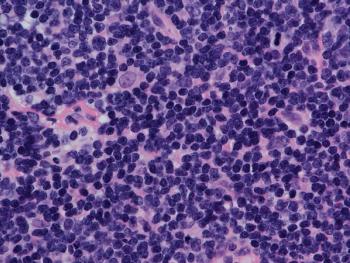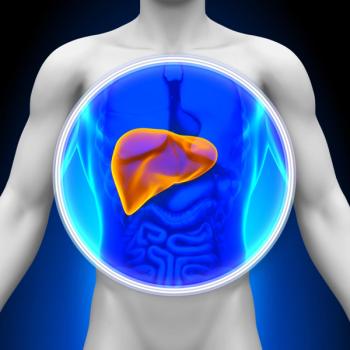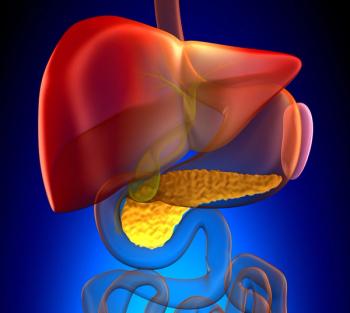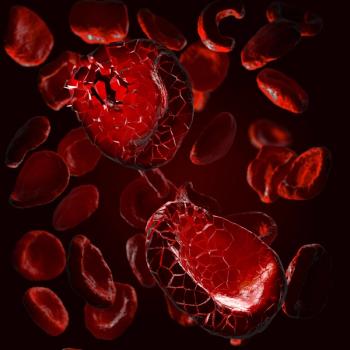
Patient reported outcomes from the phase 3 MIRASOL trial showed improvement when mirvetuximab was used vs standard of care in folate receptor-alpha positive ovarian cancer resistant ovarian cancer.

Your AI-Trained Oncology Knowledge Connection!


Patient reported outcomes from the phase 3 MIRASOL trial showed improvement when mirvetuximab was used vs standard of care in folate receptor-alpha positive ovarian cancer resistant ovarian cancer.

Response rates appear to be higher among patients with acute graft-versus-host disease who receive ruxolitinib compared with best available therapy in the phase 3 REACH2 trial.

Treatment with zanubrutinib may be a viable option for patients with B-cell malignancies who are intolerant to acalabrutinib, says Mazyar Shadman, MD.

A future planned analysis of the monarchE trial may further define how circulating tumor DNA dynamics can help identify patients with hormone receptor–positive HER2-negative breast cancer who are at high risk of recurrence.

Results presented at 2023 ESMO showed a prolonged survival benefit in patients receiving adjuvant cemiplimab for stage II-IV cutaneous squamous cell carcinoma.

BCMA and GPRC5D loss in patients with multiple myeloma may lead to resistance to continuous treatment with anti–BCMA and anti–GPRC5D agents.

Overall survival rates at 12 and 36 months appear to favor the addition of acalabrutinib to bendamustine and rituximab in the treatment of those with mantle cell lymphoma in a phase 1b trial.

Datopotamab deruxtecan plus pembrolizumab produces no new safety signals in the treatment of patients with advanced non–small cell lung cancer in the phase 1b TROPION-Lung02 trial.

Talazoparib plus enzalutamide appears to improve the objective response rate vs enzalutamide plus placebo among patients with metastatic castration-resistant prostate cancer harboring homologous recombination repair mutations in the phase 3 TALAPRO-2 study.

Dostarlimab plus chemotherapy appears to improve progression-free survival vs placebo plus chemotherapy in patients with recurrent endometrial cancer in the phase 3 RUBY trial.

Niraparib maintenance therapy for recurrent ovarian cancer does not yield a significant overall survival benefit in an updated analysis of the phase 3 ENGOT-OV16/NOVA study.

Lenvatinib in combination with blank-microsphere transarterial chemembolization and sequential microwave ablation demonstrates encouraging preliminary activity in patients with hepatocellular carcinoma.

The final analysis from the phase 2 DREAMM-2 study found continued efficacy in patients who had relapsed/refractory multiple myeloma.

Patients with high-risk resectable melanoma experienced the highest event-free survival benefit when pembrolizumab was administered in the neoadjuvant settings vs the adjuvant setting

Results from the phase 3 RATIONALE-301 trial showed improved overall survival for patients who were given frontline tislelizumab for unresectable hepatocellular carcinoma.

Durvalumab plus tremelimumab in the first-line setting yielded improved overall survival vs chemotherapy in patients with metastatic non–small cell lung cancer.

Patients with TRK fusion–positive disease experienced promising survival outcomes following treatment with larotrectinib vs standard of care.

Without regard for tumor pathology or PD-L1 expression, administering sugemalimab in combination with chemotherapy was superior to chemotherapy alone in treating patients with non–small cell lung cancer.

The phase 2 PILOT study showed encouraging overall response rates with lisacabtagene maraleucel in the second-line or beyond setting among patients with relapsed/refractory large B-cell lymphoma who did not receive hematopoietic stem cell transplantation.

Data from the phase 2 KGOG 3046 trial revealed evidence of antitumor activity with the neoadjuvant chemoimmunotherapy regimen containing durvalumab and tremelimumab for patients with advanced-stage ovarian cancer.

Patients with solid malignancies may benefit from treatment with next-generation PARP inhibitor AZD5305, according to findings from the phase 1/2a PETRA study.

Patients with squamous cell carcinoma of the head and neck who had progressive disease following treatment with platinum-based chemotherapy and a checkpoint inhibitor experienced promising safety and preliminary efficacy following treatment with tisotumab vedotin.

Subgroups analysis from the CLEAR trial of lenvatinib plus pembrolizumab showed efficacy results were consistent between East Asian patients and the overall study population.

Interim results of a phase 2 trial found a safe toxicity profile for olaparib plus pembrolizumab in advanced cholangiocarcinoma.

Most subgroups of patients with relapsed or refractory, heavily pretreated multiple myeloma showed durable responses at the 2-year follow-up to the CARTITUDE-1 trial.

Anti-tumor activity coupled with a manageable safety profile was noted with the combination of ibrutinib plus loncastuximab tesirine for patients with relapsed/refractory (R/R) diffuse large B-cell lymphoma at an interim analysis of the LOTIS-3 trial presented at 2021 ASH.

Black patients may have poorer outcomes during breast cancer treatment than White patients.

As treatment for T-cell non-Hodgkin lymphomas continues to expand, disparities and inequities continue to grow for those within certain racial groups and of a certain socioeconomic status.

Patient with advanced renal cell carcinoma who were treated with nivolumab and ipilimumab experienced a long-term survival benefit that was superior to sunitinib.

Data from the KRYSTAL-1 trial show promise of adagrasib as monotherapy and in combination with other standard agents for colorectal cancer.

Published: December 15th 2021 | Updated:

Published: February 19th 2022 | Updated:

Published: June 6th 2021 | Updated:

Published: October 21st 2023 | Updated:

Published: September 19th 2020 | Updated:

Published: June 16th 2021 | Updated: